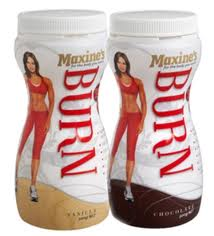Carbohydrates are made up of glucose molecules which fuel our body for brain and muscular energy, without this we feel tired both physically and mentally. When we eat carbs our body produces the hormone Insulin which allows our cells to absorb the glucose from the blood and turn it into energy. Excess glucose will be stored in the muscles or liver as glycogen, OR converted to fat and stored around our waistline :-(
When we eat excessive carbohydrates regularly, or if we skip meals, our bodies stop producing the appropriate reponse and too much sugar remains in the bloodstream rather than in our cells; or it comes and goes too rapidlly so our energy and mood fluctuates. Our cells then cry out for more to try and restore balance but unfortunately this only makes matters worse... and so the cycle begins...
So controlling our sugar cravings requires a few steps:
- We need carbohydrates which absorb SLOWLY into our cells (low Glyceamic Index (GI)) therefore our cells are satified for longer and don't cry out for a quick sugar hit! Combining protein and good fats with our meals further lowers a foods GI... therefore plan your meals to be a healthy combination of Carbohydrates, Protein and Healthy Fats
- Avoid refined carbohydrates such as sweets, white bread, pasta etc
- Eat at regular intervals and avoid skipping meals (especially breakfast!)
Factors affecting the GI
Type of starch - amylopectin and amylose are both starches found in carbohydrate. The amount and ratio of these two in a food will make the difference between a fast break down and slow break down. For example wheat, corn and rice are high in amylopectin making them fast releasing whereas barley, rye and quinoa are higher in amylose making them slower releasing. Basmati and Doongara rice is higher in amylose and is therefore lower in GI compared to normal white rice.
Processing: When grains are rolled, ground, smashed or pre-cooked (ie. instant), the protective (and harder to digest) outer jacket is removed exposing the soft easily digested starch. Whole oats have a lower GI than instant or quick-cook oats.
Fibre: Fibre acts as a bulking agent slowing down glucose absorption. Some foods naturally have higher amounts of fibre – (eg. beans and legumes). It is therefore better to eat whole foods such as brown rice and wholegrain breads rather than their white, refined alternatives. It also means that whole fruit with its higher fibre content is better than a fresh juice without pulp. Always dilute fresh juices with water and maybe add back some pulp.
Protein: Protein will lower the GI of a meal by slowing down digestion and gastric emptying time. Protein also has a higher satiety level meaning you will be kept satisfied for longer. Aim to make up at least 1/3 of your meal from protein.
Fat: Fat also reduces gastric emptying time and as a result slows down the absorption of glucose from the meal. It is essential to consume the right kind of fats from raw nuts and seeds, fish, avocado and cold pressed oils.
Acidity: Acidity of a food or meals containing acid will slow gastric emptying time. A simple tip is to add vinaigrette dressing to salad or vegetables.
|
Breakfast
|
Lunch
|
Snack
|
Dinner
|
|
1 slice rye toast
1 grilled tomato
2 poached eggs
|
Bean, salmon, goats feta and mixed vegetable salad
|
Low fat natural yoghurt with ½ banana and
1 Tbsp LSA
|
Poached or baked fish,
Steamed vegetables with a fresh parsley sauce
|
|
1 slice sourdough toast with avocado,
spinach and
smoked salmon
|
Grilled marinated chicken or tofu,
with mixed salad
|
1 small tin of tuna
Cloudy apple juice with soda
|
Pork or tofu and vegetable stir fry with ½ cup brown rice and cashew nuts
|
|
1 cup high protein natural muesli,
mixed berries,
1 Tbsp flax meal, 1 Tbsp natural yoghurt
|
1 slice Burgen bread,
marinated chicken breast, mixed salad
(Open Sandwich)
|
1 boiled egg
Low GI fruit
Diluted carrot or tomato Juice
|
Mixed bean and seed burgers
Steamed vegetables
Tomato salsa
|
|
1 cup porridge oats
½ banana
low fat milk
|
Salad Nicoise made with tuna, boiled egg, tomato, green beans & olives
|
High fibre Ryvita with
avocado and smoked salmon or tomato
|
Vegetarian bean chilli with 1 serve Quinoa
|
|
Fruit salad made from -
½ pink grapefruit, ½x apple, ½ peach, 1 plum, 2 Tbsp LSA, 2 Tbsp natural yoghurt
|
Brown rice (½ cup), chickpea, capsicum, tomato, parsley and tuna salad with vinaigrette dressing
|
Celery and zucchini sticks with hummus or baba ganuj
|
Spinach, tomato, mozzarella, basil frittata / bake served with steamed snow peas and butternut squash
|
Follow a diet like this and you can be assured constant reliable energy, calmer moods, clearer thinking and LESS SUGAR CRAVINGS!
Additional ideas which may help:
Herbal and nutritional formulas have been put together to help balance our blood sugar. Ingredients such as Chromium, Gymnema and Alpha Lipoic Acid can help controll sugar cravings during the day.
Protein Powders offer you a great low sugar alternative for a snack... I find them most useful mid afternoon as they help get you through to dinner. Protein will help improve muscle mass, reduce hunger and boost your metabolism all whilst consuming under 150 calories!
We are all going to give in to the odd chocolate craving, but when selecting your chocolate choose it well!! Dark chocolate has many health benefits and you rarely over eat it unlike milk chocolate which you can eat all day! Pana chocolate is local to Port Melbourne and is totally dairly free and natural. It comes in a small little packet and you really only need one square to be satisfied. So when you JUST HAVE TO have it, choose wisely!




No comments:
Post a Comment